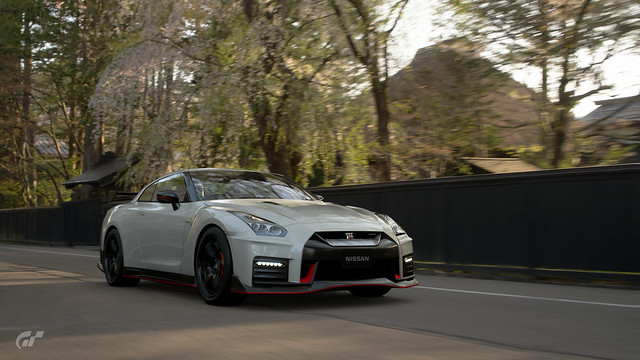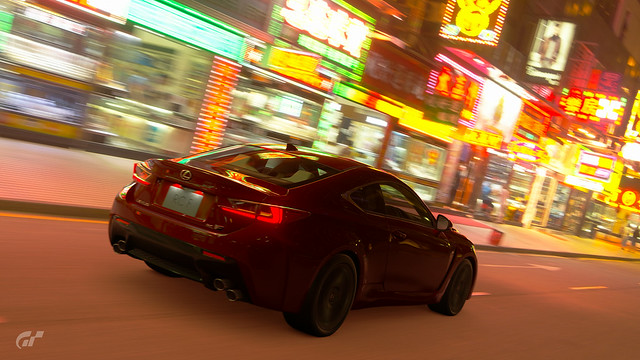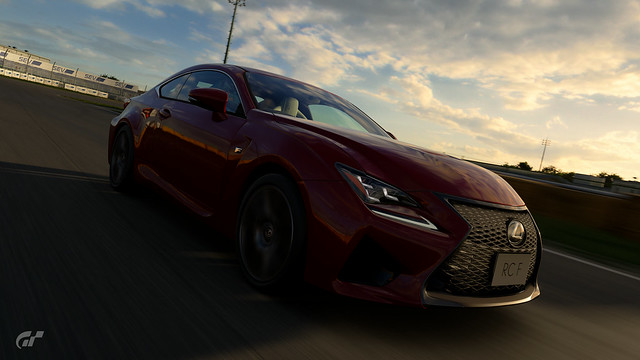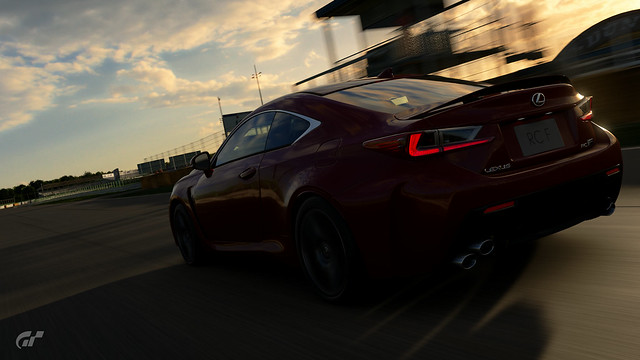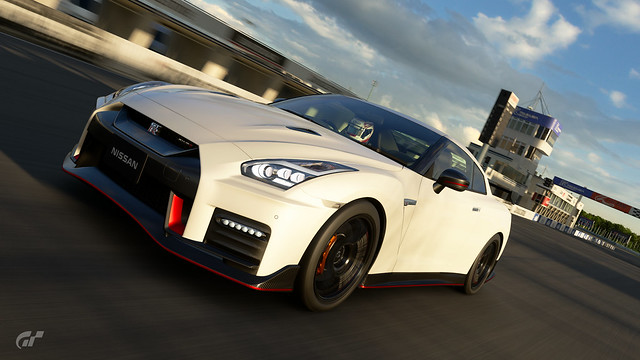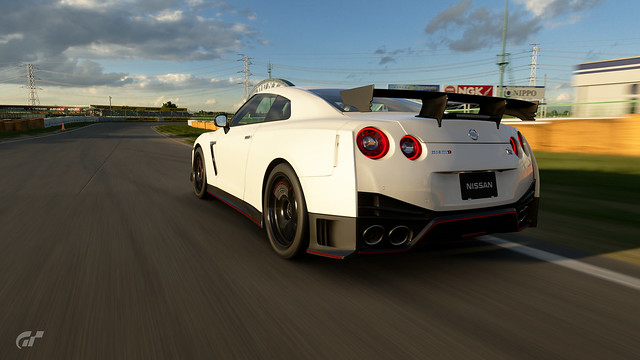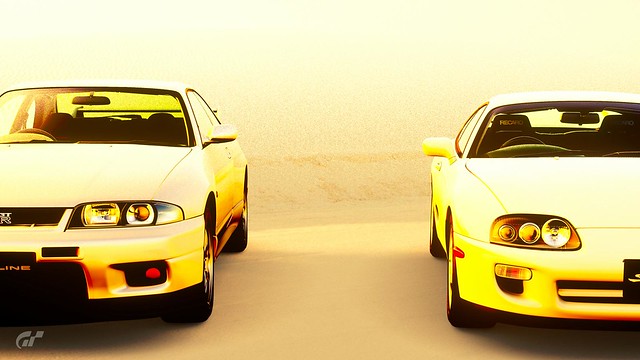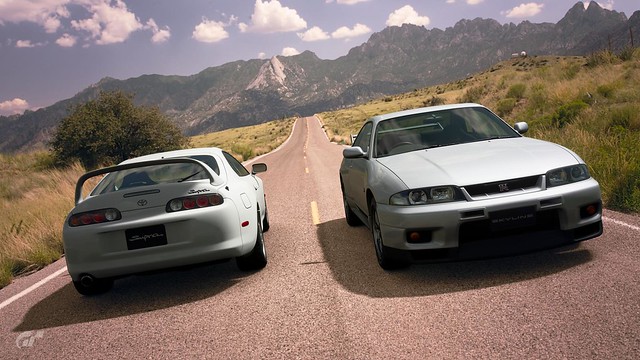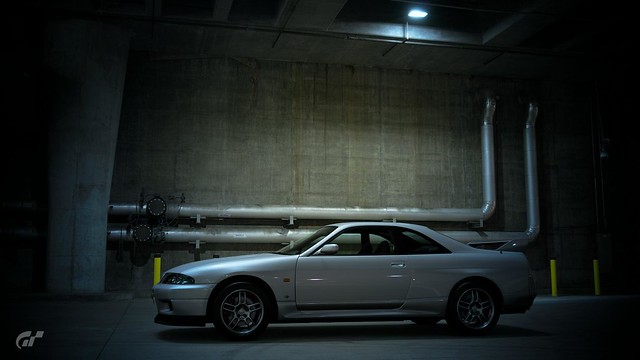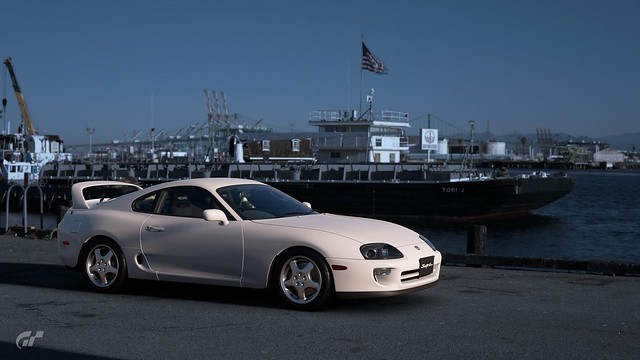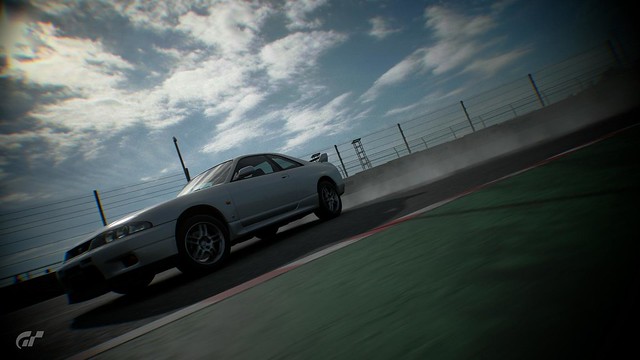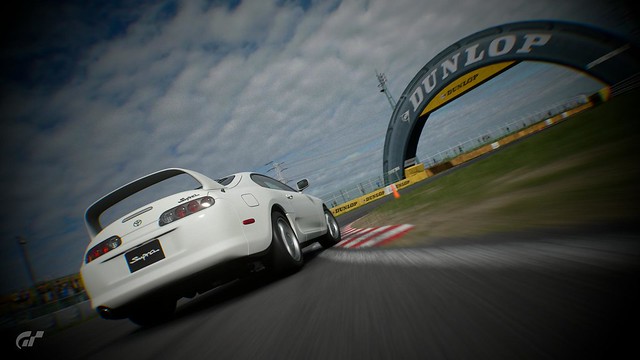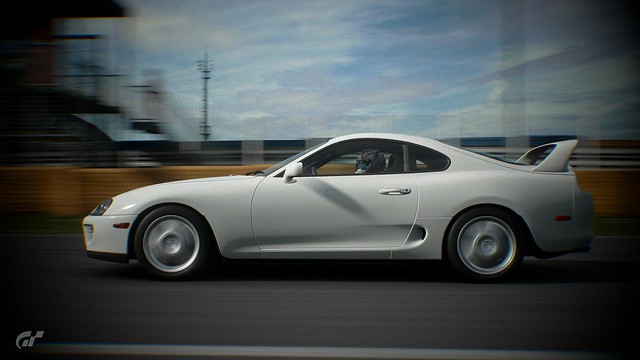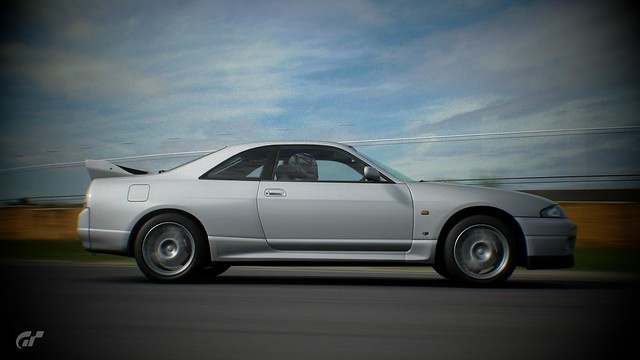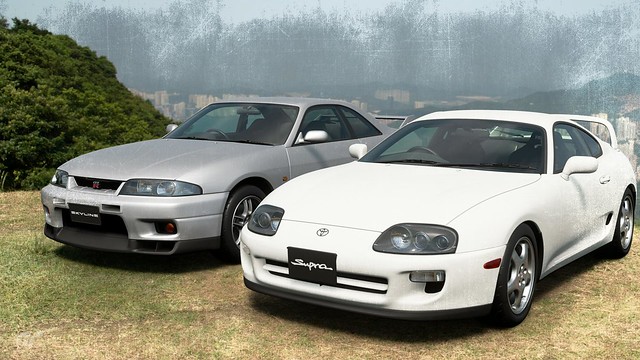When the first-ever Gran Turismo game was launched on the PlayStation in late December 1997, the R33 Skyline GT-R and the JZA80 Supra are the cover cars of the first GT game. In Gran Turismo 7, you have been given the chance to drive the two JDM icons that served as the foundation of the genesis of the Gran Turismo franchise. One of the many reasons to celebrate the franchise's 25th anniversary.
Here they are; the two JDM legends that served as the foundation of the first Gran Turismo game; the R33 Skyline GT-R from Nissan and the JZA80 Supra from Toyota. Both of these icons became forever favorites coveted by speedo boys around the globe because of their supercar-slaying performance when fully tuned to the critical level. What can I say? You can't really beat the classics, right?
Anyway, before taking a quick spin with the two JDM legends, let's have a quick dive with the stars of the first GT game.
Let's begin with the R33 Skyline GT-R. Penned by its advert as the "minus 21-second roman", the R33 GT-R lapped the legendary Nurburgring 21 seconds faster than its R32 predecessor. The hood is now made of aluminum along with the front fenders and the engine that powers it is the RB26DETT engine mated to a 5-speed manual gearbox, delivering power through all four wheels via Nissan's ATTESA E-TS all-wheel-drive system. This generation once participated in the 1995 Le Mans and one of them finished in 10th place overall, fifth in class.
Hailed as "The Sports of Toyota", the A80-spec Toyota Supra was launched in 1993 and its unique styling makes it one of the most iconic sports cars ever to come out from Japan. This generation comes with two engine choices; a naturally aspirated and turbocharged version of the 3.0L 2JZ straight-six engine. The turbocharged variant produces 276HP of power but the ones used in the JGTC (now called SuperGT) produce between less than 400 to 500HP, although speedo boys love to tune the Supra to Fast and Furious levels. Toyota says that this Supra is the best handling in its class because of its double-wishbone suspension setup. Despite being discontinued in 2002, it remains popular among speedo boys, and if it's good enough for Paul Walker, it's good enough for every speedo boy worldwide.
With their quick introduction done, it's time to take these two for a one-lap time attack around the Tsukuba Circuit. This is quite a coincidence because back in my GT SPORT days, I pitted these two round Tsukuba to find out which of these icons is the best and in the end, the R33 emerged as the winner. Now that we're living in the GT7 era, it's time to redo the experiment for nostalgic purposes.
I'm getting basked to the glory of the game's improved graphics and physics compared to GT SPORT but this is no time for that, it's time to find out which one is the best. Roll the tape.
After a quick lap around Tsukuba, again, here are the results;
JZA80 - 1m08.861s
R33 GT-R - 1m07.509s
Wow, these cars are better than they were in their GT SPORT days but in the end, it's Godzilla trumped The Fast and the Furious. Victory for the GT-R.
Looking at the cover art of the first Gran Turismo game and these two cars with your eyes, it's certain that why they are loved by many because they really are the originals that forged from our passion for cars and it's certainly where we are now without them. Yes, I know, I said this line before but it's good to have the icons back for more fun in GT7.
The R33 GT-R and the JZA80 Supra, they have really been the foundation of the Gran Turismo franchise ever since they've been chosen to be the cover cars of the first game. As the franchise continues to evolve, so does our love of cars and looks like we should be thankful for these two JDM legends that laid the seeds of this iconic car racing franchise. The more you know.









































